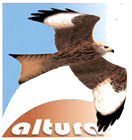Il veleno colpisce anche in Irlanda
Un certo risalto ha avuto in Irlanda il ritrovamento di un maschio di aquila reale trovato morto avvelenato ai primi di Dicembre 2010. In questo paese è in corso da molti anni un progetto di reintroduzione dell’aquila reale nella parte nord occidentale del paese dove fino ai primi anni del novecento viveva una piccola popolazione di questo rapace. La reintroduzione è avvenuta negli anni passati utilizzando il metodo dell’hacking, prelevando da nidi scozzesi aquilotti di 5-6 settimane di vita su licenza dello Scottish Natural Heritage per poi rilasciarli nei vecchi home range irlandesi una volta conseguito il piumaggio completo. Nel 2007 si è involato il primo giovane da un nido irlandese dopo quasi cento anni! Il veleno è ancora una delle minacce più consistenti per quei rapaci che, come l’aquila reale, si nutrono anche di carogne.
Di seguito l’articolo di Claire Smith che riporta l’evento irlandese:
“A RARE golden eagle taken to Ireland from Scotland as a chick as part of a reintroduction programme has been found poisoned. The RSPB told yesterday how the poisoned eagle was found outside the village of Killeter, Co Tyrone, Northern Ireland, last month. Police were called in after the male raptor was poisoned by carbofuran, which has been banned in the UK since 2001. The bird was collected as a chick from the Outer Hebrides in June this year and reared and released in Glenveagh National Park, Co Donegal, by the Golden Eagle Trust as part of an ongoing project to restore golden eagles in the Republic of Ireland.
RSPB Northern Ireland director Dr James Robinson said: “Words cannot express our disgust at this terrible and careless act.” After 20 years, there are now 35 young golden eagles in Glenveagh.
Planning for the project began in 1989.
The Irish government took the first step by partly funding environmental improvements as part of the millennium heritage celebrations. The chosen refuge for the eagles soon showed promise, with an abundance of their favourite foods.
However, the reintroduction was opposed by some farmers as a threat to their livestock”
By Claire Smith
Un certo risalto ha avuto in Irlanda il ritrovamento di un maschio di aquila reale trovato morto avvelenato ai primi di Dicembre 2010. In questo paese è in corso da molti anni un progetto di reintroduzione dell’aquila reale nella parte nord occidentale del paese dove fino ai primi anni del novecento viveva una piccola popolazione di questo rapace. La reintroduzione è avvenuta negli anni passati utilizzando il metodo dell’hacking, prelevando da nidi scozzesi aquilotti di 5-6 settimane di vita su licenza dello Scottish Natural Heritage per poi rilasciarli nei vecchi home range irlandesi una volta conseguito il piumaggio completo. Nel 2007 si è involato il primo giovane da un nido irlandese dopo quasi cento anni! Il veleno è ancora una delle minacce più consistenti per quei rapaci che, come l’aquila reale, si nutrono anche di carogne.
Di seguito l’articolo di Claire Smith che riporta l’evento irlandese:
“A RARE golden eagle taken to Ireland from Scotland as a chick as part of a reintroduction programme has been found poisoned. The RSPB told yesterday how the poisoned eagle was found outside the village of Killeter, Co Tyrone, Northern Ireland, last month. Police were called in after the male raptor was poisoned by carbofuran, which has been banned in the UK since 2001. The bird was collected as a chick from the Outer Hebrides in June this year and reared and released in Glenveagh National Park, Co Donegal, by the Golden Eagle Trust as part of an ongoing project to restore golden eagles in the Republic of Ireland.
RSPB Northern Ireland director Dr James Robinson said: “Words cannot express our disgust at this terrible and careless act.” After 20 years, there are now 35 young golden eagles in Glenveagh.
Planning for the project began in 1989.
The Irish government took the first step by partly funding environmental improvements as part of the millennium heritage celebrations. The chosen refuge for the eagles soon showed promise, with an abundance of their favourite foods.
However, the reintroduction was opposed by some farmers as a threat to their livestock”
By Claire Smith


